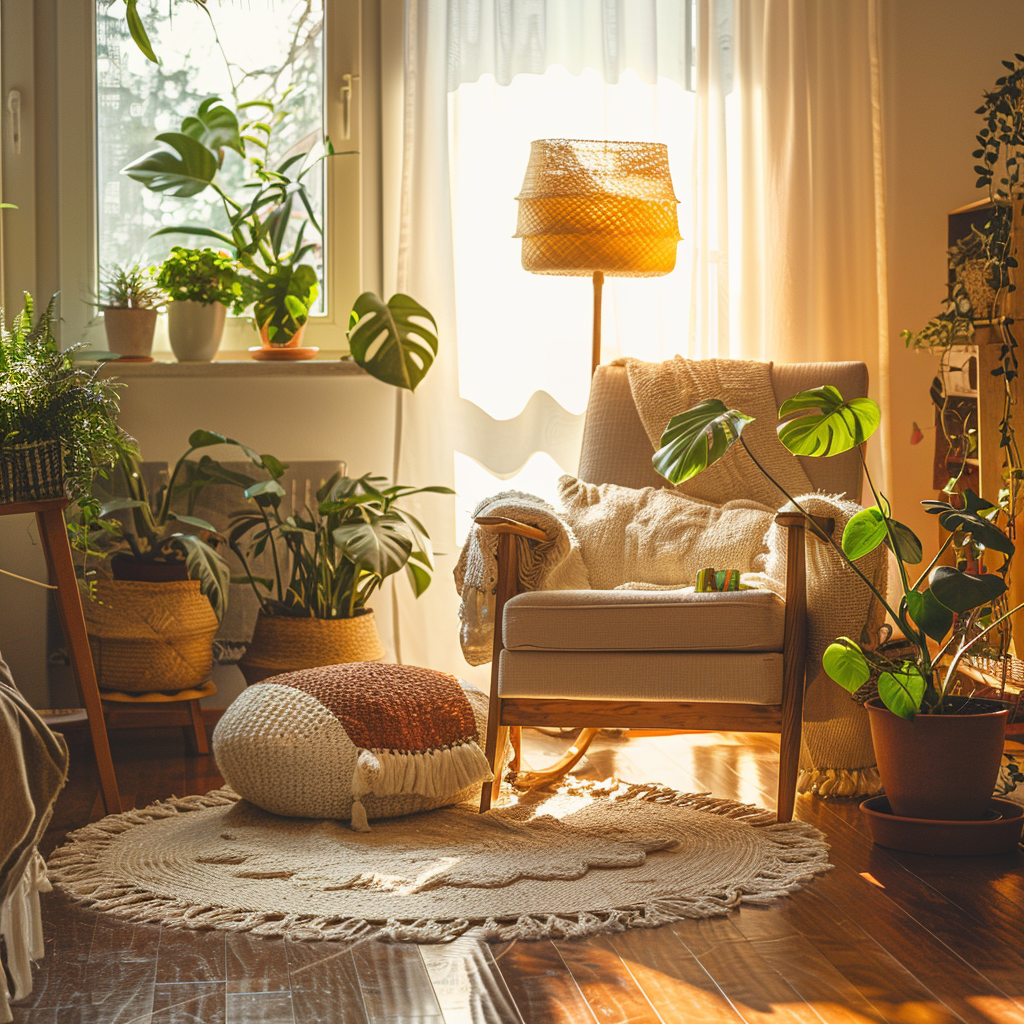Decorating your home doesn’t have to come at the expense of the environment—or your wallet. In fact, sustainable home décor can be both eco-friendly and affordable when you know where to look and how to make thoughtful choices. Whether you’re redecorating a single room or revamping your entire space, this guide will show you how to create a beautiful, sustainable home without breaking the bank. From upcycling to choosing energy-efficient designs, we’ll explore practical tips that will help you embrace sustainability while keeping things stylish.
1. Upcycle and Repurpose What You Already Have
Before you rush out to buy new furniture or décor items, take a look at what you already own. Upcycling is a fantastic way to breathe new life into old furniture, décor, and materials. Whether it’s giving a fresh coat of paint to an old chair or turning mason jars into chic storage, repurposing existing items can make a big difference in both your décor and the environment.
Unique Insight: Did you know that upcycling reduces the need for new raw materials and cuts down on waste in landfills? Plus, it’s a great way to infuse your home with one-of-a-kind pieces that reflect your personal style.
Actionable Tip: Start with one item that’s seen better days and get creative. For example, transform an old ladder into a rustic bookshelf or convert wooden pallets into coffee tables. A little DIY effort can result in statement pieces that are sustainable and unique.
2. Shop Secondhand or Vintage
One of the best ways to decorate sustainably is by buying secondhand. Thrift stores, vintage shops, and online marketplaces like Craigslist or Facebook Marketplace are treasure troves of affordable, high-quality furniture and décor. Buying secondhand not only reduces demand for new, resource-heavy production but also keeps perfectly good items from being thrown away.
Unique Insight: Older furniture is often made with higher-quality materials compared to many modern, mass-produced items. With a little bit of TLC, you can find secondhand furniture that’s built to last.
Actionable Tip: Before buying new, set aside time to browse local thrift stores or online listings. You’ll be surprised at the variety of styles and how much you can save by going secondhand.
3. Choose Sustainable Materials
When you do need to buy new items, opt for furniture and décor made from sustainable materials. Look for pieces made from bamboo, reclaimed wood, or recycled materials. These eco-friendly options are often just as affordable as their less sustainable counterparts, but they have a much lower impact on the environment.
Actionable Tip: If you’re buying new textiles like rugs, curtains, or bedding, choose organic cotton, hemp, or linen. These materials are more sustainable than conventional cotton, which uses significant water and pesticides.
Pro Insight: Bamboo is an excellent material for sustainable décor. It grows rapidly, requires no pesticides, and is incredibly durable, making it perfect for items like furniture, cutting boards, and even flooring.
4. Energy-Efficient Lighting
Lighting plays a major role in both the atmosphere of your home and your energy consumption. Switching to energy-efficient lighting, like LED bulbs, can reduce your electricity use and help lower your utility bills. Plus, energy-efficient lighting has come a long way, offering warm tones and stylish fixtures that can suit any décor style.
Actionable Tip: Replace old incandescent bulbs with LED or CFL bulbs, which use far less energy and last much longer. Also, look for dimmable options to create cozy, ambient lighting that adjusts to your needs.
Unique Insight: Incorporating natural light is one of the most eco-friendly (and budget-friendly) ways to brighten up your home. Strategically place mirrors to reflect sunlight and make rooms feel larger and brighter without turning on extra lights.
5. Decorate with Houseplants
Houseplants are one of the easiest ways to add life, color, and texture to your home while improving indoor air quality. Many plants, such as spider plants, peace lilies, and snake plants, are natural air purifiers, helping to remove toxins from your home. Plus, they’re a budget-friendly way to fill up empty spaces without buying more furniture or décor.
Actionable Tip: If you’re on a tight budget, look for plant swaps or grow plants from cuttings to save money. You can even propagate your existing plants to create new ones for free.
Pro Insight: Not only do houseplants enhance your home’s aesthetic, but they also promote mental well-being. Studies have shown that being around plants can reduce stress and improve mood, making them a sustainable investment for your home and health.
6. Use Non-Toxic Paints and Finishes
When it comes to home décor, paint is often one of the quickest and most affordable ways to transform a room. However, many traditional paints release harmful volatile organic compounds (VOCs) into the air, which can be harmful to both your health and the environment. Opt for low-VOC or zero-VOC paints to reduce your exposure to toxic chemicals while still achieving a fresh new look.
Actionable Tip: Look for eco-friendly paint brands that are certified as low- or zero-VOC. Not only are these paints better for your indoor air quality, but they often come in a variety of beautiful, on-trend colors.
Bonus Tip: You can also refinish wood furniture using water-based, non-toxic finishes to maintain a sustainable approach to your décor.
Conclusion: Sustainable Décor That’s Budget-Friendly
Decorating your home sustainably doesn’t mean spending a fortune. By upcycling what you have, shopping secondhand, and making thoughtful choices about materials and energy use, you can create a beautiful, eco-friendly home on any budget. These small changes can have a big impact—not just on the planet, but on the overall feel and functionality of your space.












